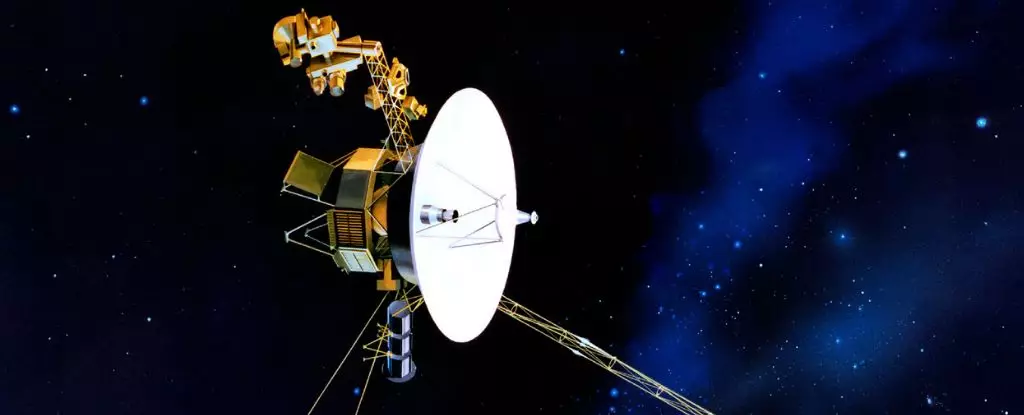Launched in 1977, the Voyager spacecraft, Voyager 1 and Voyager 2, have become symbols of pioneering exploration beyond our solar system. These robotic ambassadors have journeyed billions of miles, delivering data and captivating imagery that have fundamentally reshaped our understanding of distant celestial bodies and the nature of interstellar space. As of now, both spacecraft are in a phase of their mission where maintaining energy and operational longevity is becoming increasingly daunting due to their aging power sources.
Their journey has spanned over four decades, during which each spacecraft has traveled to the outer planets, gathering invaluable data that has contributed to our knowledge of the solar system. Voyager 1 made remarkable flybys of Jupiter and Saturn, while Voyager 2 is notable for its unique encounters with Uranus and Neptune—an achievement that remains unparalleled. As humanity’s first foray into interstellar exploration, these twin probes have offered a glimpse into the vast cosmos, equipped with instruments that have helped demystify some of the universe’s greatest secrets.
The Voyager spacecraft are powered by radioisotope thermoelectric generators (RTGs), which initially provided abundant energy for scientific instruments. However, as the plutonium fuel decays, the electrical output dwindles, presenting a significant challenge for mission engineers. Over the years, NASA’s team has carefully managed the energy reserves by selectively turning off non-essential systems to extend the function of the scientific instruments still operational. This balance allows the probes to continue returning unique data from the interstellar medium, a region beyond the influence of our Sun.
This past year, the decision was made to deactivate the plasma science instrument on Voyager 2 as part of these energy-saving measures. This instrument had provided critical data regarding the flow of ionized particles, known as plasma, which flood the space environment around the spacecraft. However, its limited functionality in recent years—primarily due to its orientation and how the plasma flows—made it a candidate for shutdown, preserving power for other scientific endeavors.
As Voyager 2 continues to travel nearly 20.5 billion kilometers from Earth, it operates with only a fraction of the power initially available. Currently, four scientific instruments remain active: a magnetometer, charged particle detectors, a cosmic ray instrument, and a plasma wave detector. Yet, forecasts suggest that by the 2030s, Voyager 2 could be reduced to just one functioning instrument due to ongoing power depletion. This limitation raises concerns regarding the future of interstellar research gleaned from these voyages—the last direct remnants of humanity’s exploratory spirit in space.
Both probes send their data back home using the Deep Space Network, a collection of large antennas that facilitate two-way communication across vast distances. The time delay for commands and data can stretch up to two days, highlighting the challenges of remote exploration. Yet even with such limitations, the commitment to continuous exploration remains unyielding, with mission teams adjusting protocols to maximize output from what remains of the spacecraft’s systems.
While Voyager 1 reached interstellar space in 2012, followed by Voyager 2 in 2018, both spacecraft have shifted the focus of their scientific inquiry toward the heliosphere’s boundaries and the interstellar medium. Their historical flybys provided the scientific community with unprecedented insights, such as the chaotic dynamics of planetary atmospheres and the complex magnetic fields surrounding gas giants. Their ongoing mission continues to gather fundamental data that influences current astrophysics paradigms—illustrating how far we have come in our quest for knowledge about planetary systems and the cosmos.
Moreover, the outcome of the Voyager missions extends beyond mere exploration. They have become a cornerstone of space science education, inspiring generations to look toward the stars. The images and data collected are not merely numbers and pixels; they represent a legacy of curiosity and human endeavor to expand our understanding of the universe. As discussions about potential future missions and the fate of artificial life in the cosmos unfold, the Voyagers serve as a testament to what is achievable when we dare to dream big.
As the Voyager spacecraft continue their solitary journey through the cosmic ocean, the mission remains pivotal in shaping our understanding of not only the solar system but also the interstellar medium that fills the void between stars. Each update from these probes is a reminder of the fragility of human-made objects in the infinite expanse of space, yet they inspires hope and curiosity about the universe’s wonders.
As Voyager 2 approaches its twilight years, the heartening reality is that its journey is far from over. As NASA continues to adjust, innovate, and adapt, the exploration of the unknown persists on a scale that transcends time and space. The Voyager missions signify a remarkable chapter in humanity’s sordid history of attempting to understand the cosmos—and with their ongoing contributions, they ensure that this narrative will continue to evolve long after the final instruments cease to function.



Leave a Reply